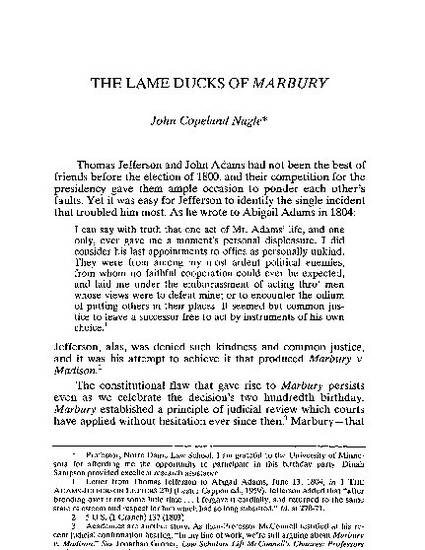
The election of 1800 was one of the most contested - and important - in American history. After it became clear that neither President John Adams nor a Federalist majority in Congress had been reelected, they acted during the lame-duck period to preserve their influences far into the future. They did so by appointing John Marshall as Chief Justice, ratifying the Treaty with France, creating numerous new federal judicial positions, and filling many of those positions with friends, family, and Federalists (including William Marbury). Not surprisingly, Jefferson and his supporters protested these actions as contrary to the will of the people who had just spoken in the election. Lame ducks have produced similar mischief since then. This article recounts several such recent episodes, including the pardons issued shortly before President Clinton left office in 2001, and Illinois Governor George Ryan's commutation of all death sentences shortly before he left office in 2003. The article also sketches a proposal to deny or cabin governmental powers that can tend to be abused during lame-duck periods.
Available at: http://works.bepress.com/john_nagle/40/

Reprinted with permission of Constitutional Commentary.